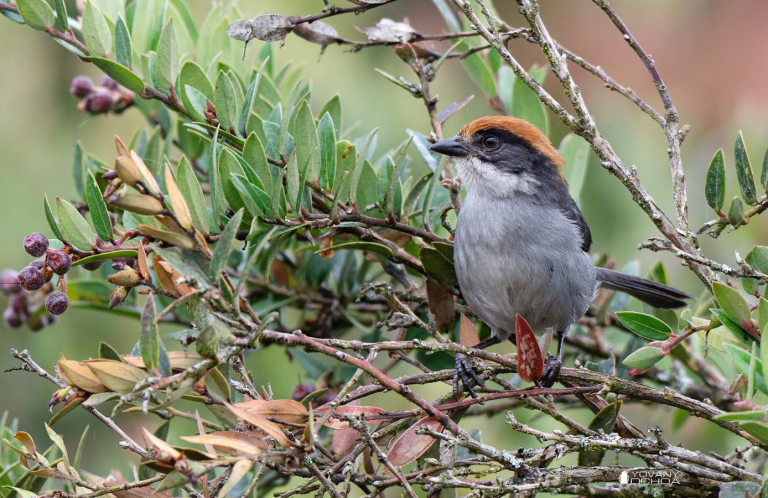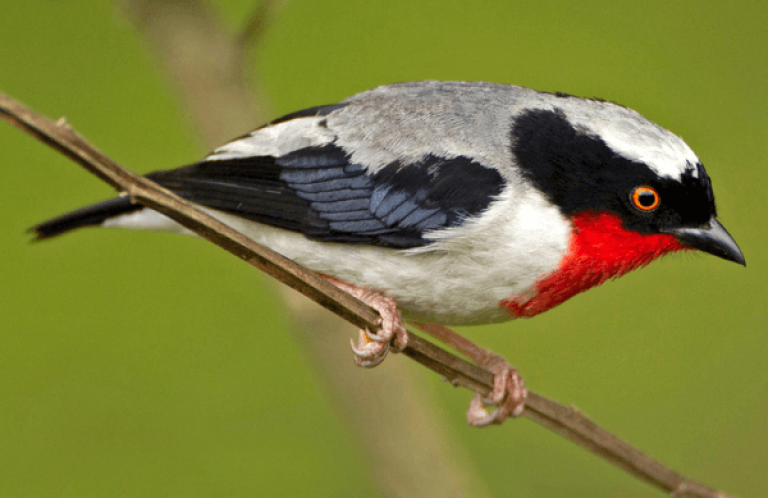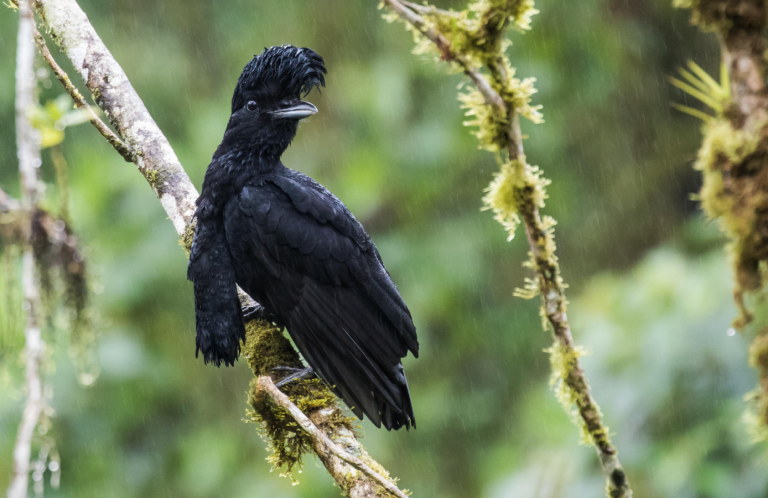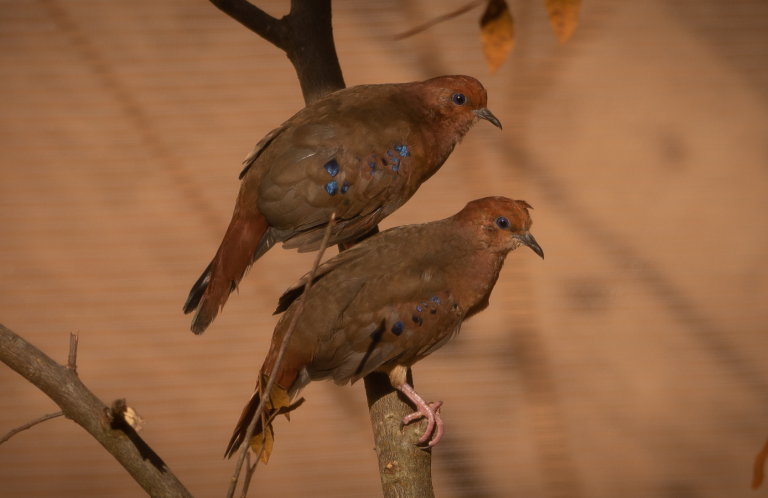New Reserve in Colombia will Protect Endangered Cundinamarca Antpitta
Before it had even received a name, what would soon be known in English as the Cundinamarca Antpitta, a relatively nondescript, olive-brown antpitta, let out an unfamiliar call that caught the ear of a seasoned birder. That was in 1989. Now, the Cundinamarca Antpitta is protected by a new reserve to ensure a bright future for its small population.
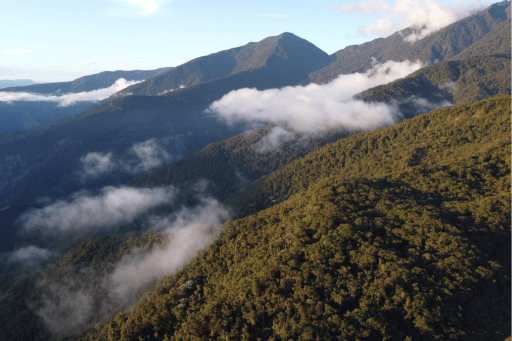
The Reserva Natural Refugio Tororoi is a 446-acre (180.52 hectares) expanse of misty, highland cloud forest situated on the eastern slope of the Andes Mountains, southeast of Bogotá, Colombia. Created through a partnership between American Bird Conservancy (ABC), Fundación Camaná Conservación y Territorio, the direct investment funds of the Conserva Aves Initiative, and the Herrera family whose property borders the reserve, the Reserva Natural Refugio Tororoi (tororoi is the local Spanish name for “antpitta”) protects critical habitat for the Endangered Cundinamarca Antpitta, which numbers only in the hundreds and faces pressure from deforestation that could decimate the habitat of this range-restricted species.
“Much has changed in this area since the species was first documented in 1989, and the small range of habitat where Cundinamarca Antpittas are found is at risk of shrinking further,” said Eliana Fierro-Calderon, International Conservation Project Officer for ABC. “The Reserva Natural Refugio Tororoi provides a safe haven and hope for the future of this species, about which we still have so much to learn.”
An Unfamiliar Call Leads to a First Find
In 1989, the Cundinamarca Antpitta was unknown to science. A knowledgeable birder, Peter Kaestner, heard an unfamiliar “fuit foh feer” call coming from the understory. Intrigued by the mystery singer, he recorded the call, played it back, and waited. After about 45 minutes, out popped an antpitta that left Kaestner puzzled. It was clearly an antpitta with its long legs, hopping gait, and short tail, but it was unlike any antpitta Kaestner had ever seen. Its olive-brown feathers, accented by a white throat and gray underparts marked by thin, white streaks, were unrecognizable.
The bird was unrecognizable because it had never before been described to science. In 1992, the previously unnamed antpitta was officially documented, thanks in no small part to Kaestner's careful observations and recordings. It was given the scientific name Grallaria kaestneri.
A Family with an Eye on Conservation
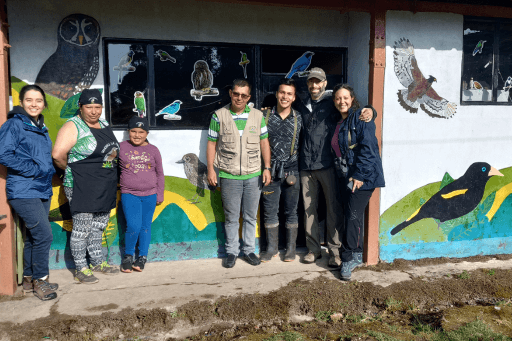
The story of the Cundinamarca Antpitta, it turns out, is one with many personal touches, from its documentation to the ongoing efforts to conserve it. The Herrera family arrived in Guayabetal, Cundinamarca in 2008, bringing their two children to the 11 acres of land they had purchased. In 2017, Ariel Herrera took a one-time birding class offered by the Mayor's office and La Corporación Autónoma Regional de la Orinoquia (Corporinoquia), aimed at finding new locations where the Cundinamarca Antpitta could be spotted. It was that same year that the Herreras first saw one on their property.
Not long after that first observation, the family began working with Fundación Camaná to build out La Herrería Trail and develop their ecotourism operation under the Sendero La Herrería brand. With a focus on birders, drawn to the region by its biodiversity and abundant birdlife, the family have made the Cundinamarca Antpitta a focal species, setting up a worm feeding station where these birds, most often scuttling about on the forest floor in the dense understory, can be observed more closely.
The Herreras have been champions for the creation of the Reserva Natural Refugio Tororoi and the conservation of habitat vital to the Cundinamarca Antpitta. Today, their property is bordered on three sides by protected land, with several miles of maintained trails snaking through the montane forest that surrounds it. It supports both endemic birds like the Sickle-winged Guan and the Slaty Brushfinch, and migratory species including the Blackburnian Warbler and the Swainson's Thrush. They welcome birders and photographers to enjoy all of the wildlife, but especially ones eager to spot the antpitta.
Para la familia Herrera Quintaco: “Atender turistas es algo muy bonito, porque hemos tenido la posibilidad de conocer personas de otras culturas; también, el cuidado de Grallaria kaestneri se convirtió en parte del diario vivir ya que todos los días ella espera a Ariel y a su vez, Ariel la recuerda todo el tiempo, y eso es una relación muy bonita. La vida de la familia cambio radicalmente; antes era sembrar lulo y mora y de forma permanente, talar árboles para el cultivo. Hoy la vida gira alrededor de la conservación y el aviturimo.”
From the Herrera Quintaco family: “Serving tourists is a very nice experience, because we have had the opportunity to meet people from other cultures. Also, caring for Grallaria kaestneri became part of daily life since every day the birds wait for Ariel and in turn, Ariel always remembers them, and that is a very beautiful relationship. The family's life changed radically. Before it was planting lulo and berries and cutting down trees for cultivation. Today life revolves around conservation and birdwatching.”
The Road Ahead
The Cundinamarca Antpitta population, numbering anywhere from 330 to 800 individuals, is small, and so is the range of the antpitta's habitat. In the time since Peter Kaestner's first observation of the Cundinamarca Antpitta in 1989, the bird's habitat has undergone a transformation as deforestation reshapes the densely forested landscape. Initially listed as Vulnerable, the Cundinamarca Antpitta today is considered Endangered.
“Fast forward to 2022, when I returned to the very spot where I first laid eyes on what became the Cundinamarca Antpitta. Instead of a verdant montane forest, I found a cattle pasture. There was no sign of any of the myriad birds that inhabit the forest, and of course, no Cundinamarca Antpittas,” Kaestner said. “But there is an optimistic ending to this story.”
American Bird Conservancy and Fundación Camaná Conservación y Territorio have been working since 2022 to protect the Cundinamarca Antpitta in partnership with the Herrera family. The establishment of the Reserva Natural Refugio Tororoi is a major milestone for the antpitta, and the first protected area dedicated to the species. With the reserve secured, a habitat management plan is being designed and implemented, and ABC is supporting prioritized activities in the plan, including trail improvement, signage installation, and infrastructure to welcome more visitors. Fundación Camaná is looking to the future and the prospect of protecting more acreage of the humid montane forest habitat required for Cundinamarca Antpittas to thrive.
The new reserve partially overlaps the Páramo El Atravesado National Protective Forest Reserve located further upslope, which itself connects to the Quebrada Honda regional protected area. The expansion of contiguous protected habitat is important for more than just the Cundinamarca Antpitta. The Endangered Black-and-chestnut Eagle has also been spotted in the area, in addition to some 300 other species like the Vulnerable Brown-breasted Parakeet and the Solitary Eagle, which is Near Threatened.
The terrain in the immediate area north of the reserve is rough and has mostly been spared the ravages of development and deforestation. The road leading up to the Reserva Natural Refugio Tororoi is dotted with dairy farms and winds its way up gradually until it stops at the home of the Herrera family. Key allies in the effort to conserve the Cundinamarca Antpitta, they are building out their ecotourism operation, adding gorgeous murals, interpretive signage, and amenities like a small restaurant to serve visitors from around the world.
“These kinds of partnerships are essential to protecting the land needed to conserve some of the most vulnerable species,” said Fierro-Calederon. “The threat of deforestation is very real, and if we can work with our partners to create connected habitats we'll provide the best chance for survival for these birds.”
Conservation takes a community. Peter and Hank Kaestner know this and are proud supporters of ABC's Bird Habitat Protection Fund. ABC, Fundación Camaná, and the Herrera Family gratefully acknowledge the Bezos Earth Fund, BirdLife International, and Bobolink Foundation for joining Peter and Hank in the effort to conserve the Cundinamarca Antpitta. ABC's Habitat Protection Fund has helped create a brighter future for the Cundinamarca Antpitta and the dozens of species that share its habitat. Working with 59 partners, ABC has supported the protection of more than 1 million acres of land for nearly 3,000 bird species.
Support ABC's Bird Habitat Protection Fund and make a difference for birds today »
###
American Bird Conservancy (ABC) takes bold action to conserve wild birds and their habitats throughout the Americas. Inspired by the wonder of birds, we achieve lasting results for the bird species most in need while also benefiting human communities, biodiversity, and the planet's fragile climate. Our every action is underpinned by science, strengthened by partnerships, and rooted in the belief that diverse perspectives yield stronger results. Founded as a nonprofit organization in 1994, ABC remains committed to safeguarding birds for generations to come. Join us! Together, we can do more to ensure birds thrive.
Conserva Aves protects territories of life. It is an innovative, bold, and visionary conservation initiative led by American Bird Conservancy, Audubon, BirdLife International, and RedLAC that aims to create, consolidate, and manage subnational protected areas for the benefit of birds, biodiversity and local communities across Latin America and the Caribbean.
Media Contact
Jordan Rutter
Director of Communications
media@abcbirds.org





































